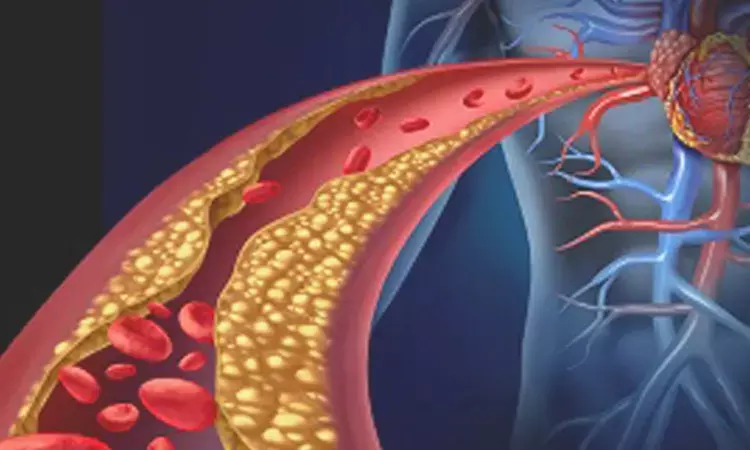- Home
- Medical news & Guidelines
- Anesthesiology
- Cardiology and CTVS
- Critical Care
- Dentistry
- Dermatology
- Diabetes and Endocrinology
- ENT
- Gastroenterology
- Medicine
- Nephrology
- Neurology
- Obstretics-Gynaecology
- Oncology
- Ophthalmology
- Orthopaedics
- Pediatrics-Neonatology
- Psychiatry
- Pulmonology
- Radiology
- Surgery
- Urology
- Laboratory Medicine
- Diet
- Nursing
- Paramedical
- Physiotherapy
- Health news
- Fact Check
- Bone Health Fact Check
- Brain Health Fact Check
- Cancer Related Fact Check
- Child Care Fact Check
- Dental and oral health fact check
- Diabetes and metabolic health fact check
- Diet and Nutrition Fact Check
- Eye and ENT Care Fact Check
- Fitness fact check
- Gut health fact check
- Heart health fact check
- Kidney health fact check
- Medical education fact check
- Men's health fact check
- Respiratory fact check
- Skin and hair care fact check
- Vaccine and Immunization fact check
- Women's health fact check
- AYUSH
- State News
- Andaman and Nicobar Islands
- Andhra Pradesh
- Arunachal Pradesh
- Assam
- Bihar
- Chandigarh
- Chattisgarh
- Dadra and Nagar Haveli
- Daman and Diu
- Delhi
- Goa
- Gujarat
- Haryana
- Himachal Pradesh
- Jammu & Kashmir
- Jharkhand
- Karnataka
- Kerala
- Ladakh
- Lakshadweep
- Madhya Pradesh
- Maharashtra
- Manipur
- Meghalaya
- Mizoram
- Nagaland
- Odisha
- Puducherry
- Punjab
- Rajasthan
- Sikkim
- Tamil Nadu
- Telangana
- Tripura
- Uttar Pradesh
- Uttrakhand
- West Bengal
- Medical Education
- Industry
Plaques with fibrous cap thickness of < 65 um prone to rupture, OCT study reveals

CHINA: A study published in BMC Cardiovascular Disorders found that, plaques with a fibrous cap thickness of 65 to 80 μm were more likely to rupture and/or thrombose than those with a cap thickness of 80 μm or more.
Acute coronary syndrome (ACS), a key contributor to morbidity and mortality in people with coronary artery disease, is typically brought on by the rupture of coronary plaque (CAD). One of the significant developments in the fight against ACS is the early diagnosis of plaques that are prone to rupture, or susceptible plaques. Current Optical coherence tomography (OCT) based research contradicts findings from an earlier autopsy investigation.
Therefore, the authors of this study used OCT to further analyze the relationship between plaque rupture or thrombosis and 65 μm < FCT ≤ 80 μm.
OCT was used to identify FCT for this purpose on the culprit lesions in 502 consecutively recruited patients. According to FCT, patients were divided into three groups: Group A (FCT ≤ 65 m, n = 147), Group B (65 fct ≤ 80 m,="" n="84),"(fct="" 80 m, n = 271). The inpatient medical record system was used to gather clinical and laboratory data. The association between FCT and plaque rupture and/or thrombosis was examined using univariable and multivariable logistic regression models. fct ≤ 80
Key findings of the study:
- Plaques with thinner FCT, particularly those with an FCT <65 m, were more likely to rupture and/or thrombose (P< 0.001).
- Compared to plaques with FCT > 80 μm, those with FCT between 65 and 80 μm had a significantly increased risk of rupture and/or thrombosis (P < 0.001).
- In multivariable analysis, FCT ≤ 65 μm and 65 < FCT ≤ 80 μm were independent predictors for plaque rupture ([FCT ≤ 65 μm vs. FCT > 80 μm]: OR = 8.082, 95% CI = 4.861 to 13.435, P < 0.001; [65 < FCT ≤ 80 μm vs. FCT > 80 μm]: OR = 2.463, 95% CI = 1.370 to 4.430, P = 0.003), thrombosis ([FCT ≤ 65 μm vs. FCT > 80 μm]: OR = 25.224, 95% CI = 13.768 to 46.212, P < 0.001; [65 < FCT ≤ 80 μm vs. FCT > 80 μm]: OR = 3.675, 95% CI = 2.065 to 6.542, P < 0.001) and plaque rupture with thrombosis ([FCT ≤ 65 μm vs. FCT > 80 μm]: OR = 22.593, 95% CI = 11.426 to 44.674, P < 0.001; [65 < FCT ≤ 80 μm vs. FCT > 80 μm]: OR = 4.143, 95% CI = 1.869 to 9.184, P < 0.001).
The investigators came to the conclusion that compared to plaques with FCT > 80 μm, those with 65 fct ≤ 80
Future prospective in vivo investigations are required to confirm whether FCT ≤ 80 μm can predict plaque rupture or clinical outcomes or act as a treatment target for CAD patients, they added.
Reference
Liu, X., He, W., Hong, X. et al. New insights into fibrous cap thickness of vulnerable plaques assessed by optical coherence tomography. BMC Cardiovasc Disord 22, 484 (2022).
https://doi.org/10.1186/s12872-022-02896-z
Dr Kamal Kant Kohli-MBBS, DTCD- a chest specialist with more than 30 years of practice and a flair for writing clinical articles, Dr Kamal Kant Kohli joined Medical Dialogues as a Chief Editor of Medical News. Besides writing articles, as an editor, he proofreads and verifies all the medical content published on Medical Dialogues including those coming from journals, studies,medical conferences,guidelines etc. Email: drkohli@medicaldialogues.in. Contact no. 011-43720751


